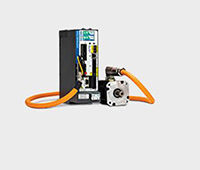Antenna engineers, in particular in the mobile communications industry, are faced with the challenge of optimizing antenna performance while complying with the functional and geometrical constraints of integrating multi-band antennas into compact devices. These engineers’ tasks can be simplified with the latest extension to the CST STUDIO SUITE integral equation solver, the Characteristic Mode Analysis (CMA) tool. CMA is a technique developed to provide physical insight into the behavior of a conducting surface. CMA calculates a set of orthogonal current-modes which are supported on a conducting surface – for example, the current modes of a metal plate. By using CMA, engineers can tune an antenna to the correct resonant frequencies and work out where to place the feed to couple into a particular radiating mode.

The CMA tool, which is built into the integral equation solver module of CST STUDIO SUITE, automates the process of calculating these modes, and calculates the modal significance (a measure of which modes are dominant at a particular frequency), farfield radiation pattern and surface current distribution associated with each mode, with automatic mode-tracking. This offers users significant insight into their device. For example, when developing a multi-band printed antenna, the CMA tool can be used to calculate the current modes on the antenna at the desired resonant frequency, and then optimize the geometry to increase the coupling to the desired mode.
CST engineers will be available to discuss the CMA solver at their booth, #311.
“We have a large customer base working on mobile devices, and these users require fast, accurate methods for their designs,” commented Dr. Peter Thoma, Managing Director R&D, CST. “CMA is one of the most effective techniques for analyzing and optimizing printed antennas, especially when the antennas need to be compact and integrated into a complex environment.”
CST
www.cst.com
Filed Under: Wireless • 5G and more, ENGINEERING SOFTWARE, Wireless devices, MOTION CONTROL, MORE INDUSTRIES





I want to know how to observe different modes for simple rectangular patch antenna. And how to see the CMA plot different frequency in cst.
I want to know how to find characteristics modes of Metamaterial loaded antenna.